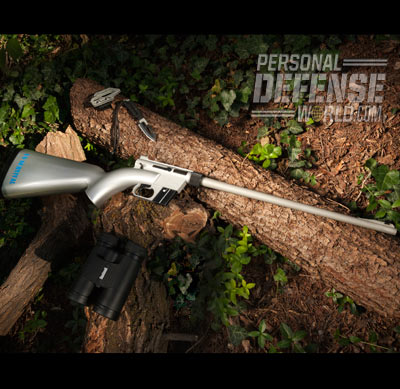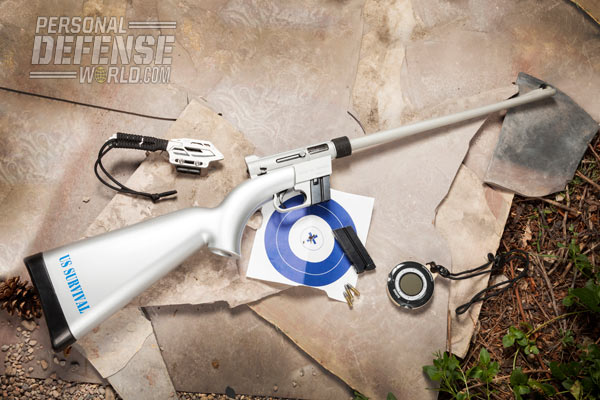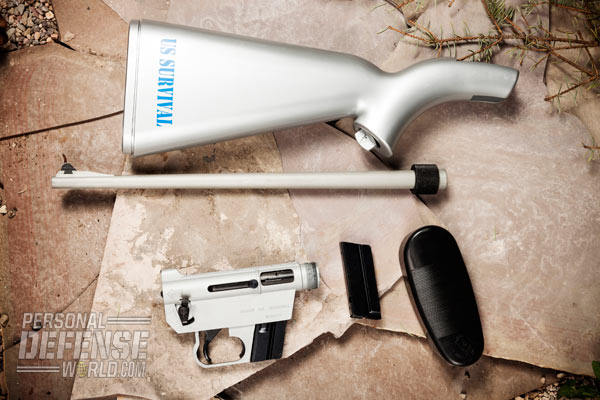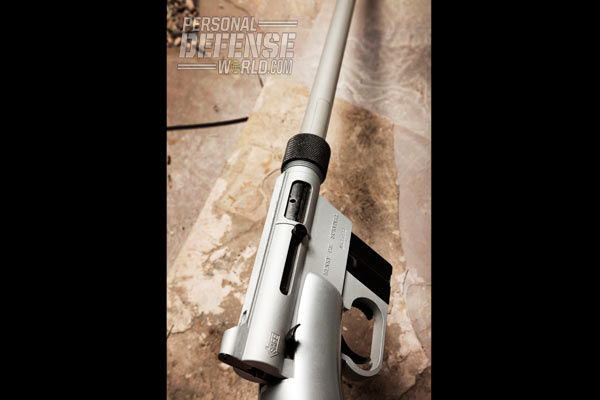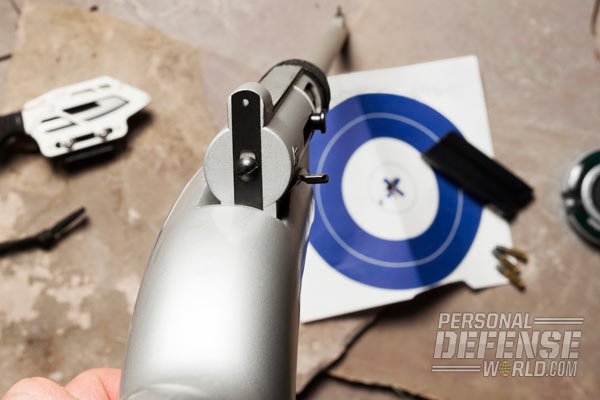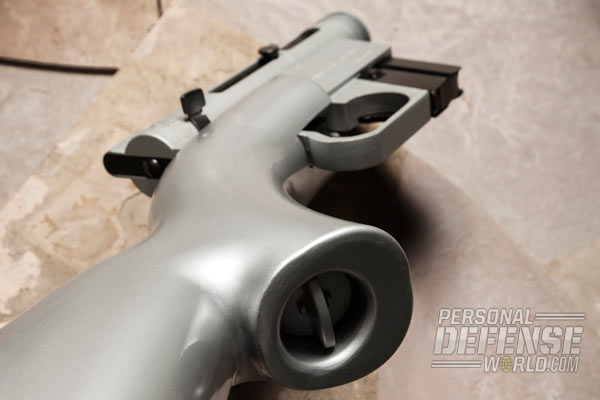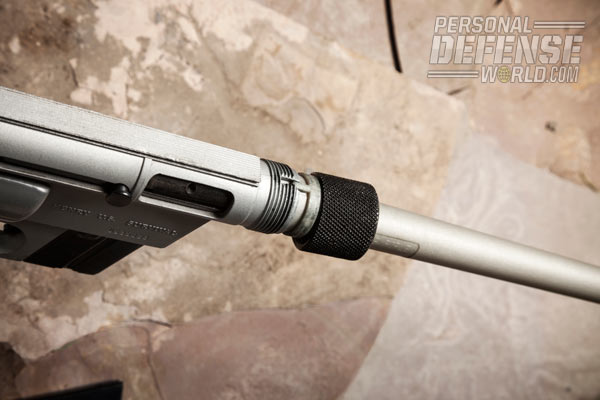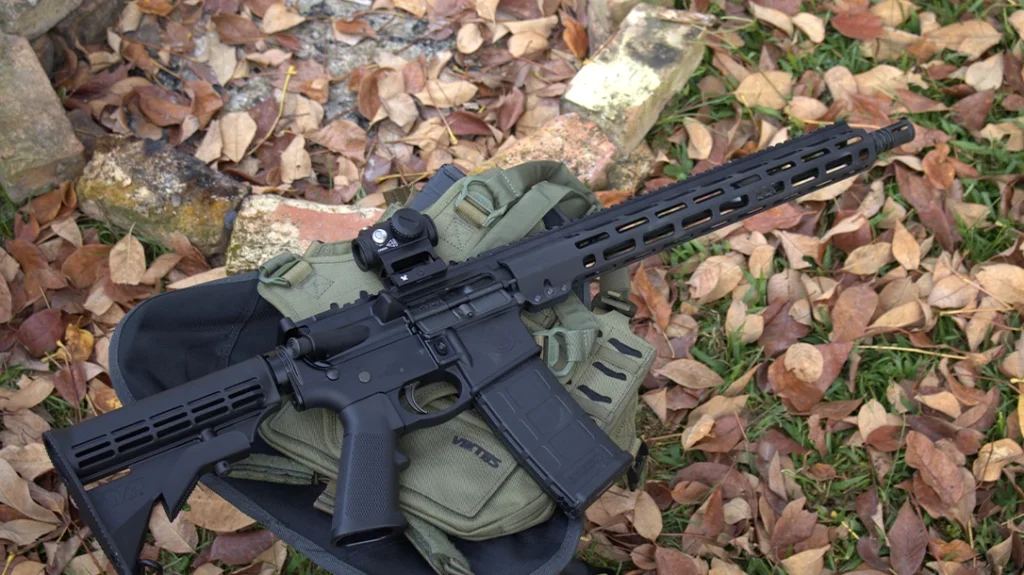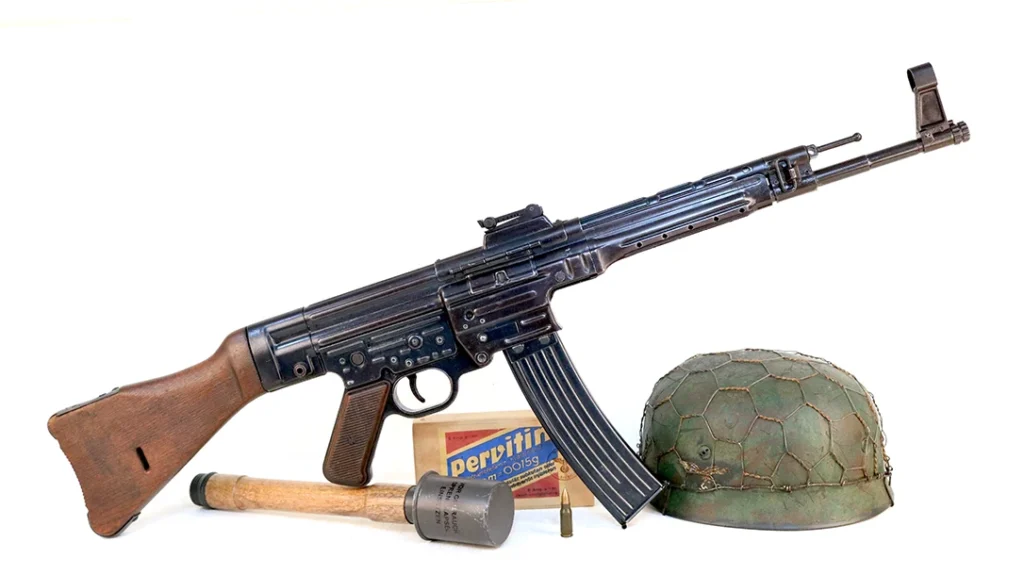The slickest, most innovative, all-around useful firearm I own is the Henry U.S. Survival AR-7 rifle I acquired several years ago (click here to read a review of the AR-7). Today’s Henry Survival rifle evolved from the AR-7 rifle originally designed in the late 1950s by Eugene Stoner—the father of the AR-16. The design was later sold to other manufacturers, but quality eventually deteriorated.
Henry Repeating Arms acquired rights to the U.S. Survival AR-7 in 1997, and has manufactured the rifle in the U.S. since that time. Quality has greatly improved; some design changes have been incorporated, and manufacturing controls have produced big improvements in this one-of-a-kind rimfire. These changes include a new barrel bushing to improve feeding reliability. The magazines have been upgraded, which also improved feeding. The magazines are made of steel, and each has an eight-round capacity. A small insert functions like a feed ramp, guiding each round into the chamber.
“The gun has changed significantly,” said Henry President Anthony Imperato. “The receiver is cast and machined at our facility in Wisconsin. The silver one you have been using came from a supplier. The new black version is much improved. This is the most reliable version ever of the AR-7.”
Advertisement — Continue Reading Below

Dismantling and Stowing: The .22 LR autoloader can be dismantled in seconds without the need for tools. Once taken down, its main components—receiver, barrel and magazine—can be stowed away in its own ABS plastic stock, which is waterproof and dust-resistant. The rifle’s 16-inch barrel consists of a steel liner encased in a composite housing, while the receiver is cast of aluminum. Once enclosed by its polymer stock, the rifle tucks handily away in a backpack, or can be consigned to the trunk of your car. That’s where my AR-7 spends most of its time.
Advertisement — Continue Reading Below

Uncasing: To uncase the rifle from its compartmented stock, simply pry off the buttpad, then slide out the barrel, receiver and magazine. Next, insert the rear of the barrel into the receiver, and anchor it in place by turning a threaded ring permanently attached to the barrel until the barrel is tightly fitted. Next, fit the barreled receiver to the stock, and turn a thumbscrew in the base of the pistol grip until the receiver and barrel are snugged firmly in place.

Wilderness Survival: I can’t tell you how often I’ve enjoyed having a gun at hand when I normally wouldn’t have thought to bring one along. I keep a brick of .22 LR ammunition in the trunk alongside the little rifle. I live in desert and mountain country, so I often have the opportunity to drive several yards off the road and plink for a while. The rifle is plenty accurate enough to shoot rabbits, ground squirrels and other small game. That makes it great at what it was designed for—wilderness survival. In extreme circumstances, I wouldn’t hesitate to take a deer with my AR-7. A carefully aimed headshot would do the trick, provided the range wasn’t too great.
Advertisement — Continue Reading Below

Aperture Sights: One thing I really appreciate about this rifle is the aperture sights. The rear sight is positioned at the very back of the receiver, placing it as close to your eye as possible. You have the choice of two apertures—a small “target” aperture and a larger “ghost ring” sight. I never use the smaller aperture—your eye automatically centers the front sight at the largest point of light visible through the larger orifice, so there’s little need to use the smaller aperture. Many years ago, the Army trained me to shoot with an aperture-equipped M1 Garand. The aperture was large for close-range shooting, but worked well enough at a distance that I could regularly hit a man-sized target a full 600 yards away. I’ve been a fan of aperture sights ever since.
Another reason I like aperture (“peep”) sights is that they’re kinder to aging eyes. I’m now of the bifocal glasses generation, and increasingly have trouble lining up an open rear sight with the front sight, then with the target. With aperture sights, you’re only vaguely aware of the rear sight (it appears as a blur as you look through it). This makes aperture sights extremely fast to use. Aperture sights are also more accurate than iron open sights. There’s a reason you’ve never seen a serious target rifle sporting semi-buckhorn sights.
Advertisement — Continue Reading Below

Round-Nosed Ammo: I’d stick with conventional round-nosed ammunition (Federal’s 40-grain Gold Medal, Winchester High-Velocity 40-grain ammunition, CCI 40-grain Mini-Mags, Wolf Gold 40-grain fodder) and avoid loads with truncated bullets. The few malfunctions I had were when flat-nosed bullets hung up on entering the chamber. Aside from those few glitches, the AR-7 fed and fired just fine. The first few times I fired this rifle, I was surprised at the reliability it delivered. Now I simply take it for granted.
Advertisement — Continue Reading Below
I take comfort in knowing my Survival rifle is tucked away in my car’s trunk. When I go backpacking, it rides along in my pack. I don’t expect to use it to survive in an emergency, but I always like to have a rifle that’s quickly and easily accessible. If I run short of food in the high country, grouse are often available. Shot in the head with my Henry Survival rifle, these birds can be pretty tasty.
Specifications: Henry U.S. Survival AR-7
- Caliber: .22 LR
- Barrel: 15.98 inches
- OA Length: 35 inches
- Weight: 2.5 pounds (empty)
- Stocks: ABS plastic
- Sights: Adjustable rear, blade front
- Action: Semi-auto
- Finish: Teflon
- Capacity: 8+1
- MSRP: $290-$350
For more information, visit http://www.henryrepeating.com.
Advertisement — Continue Reading Below
